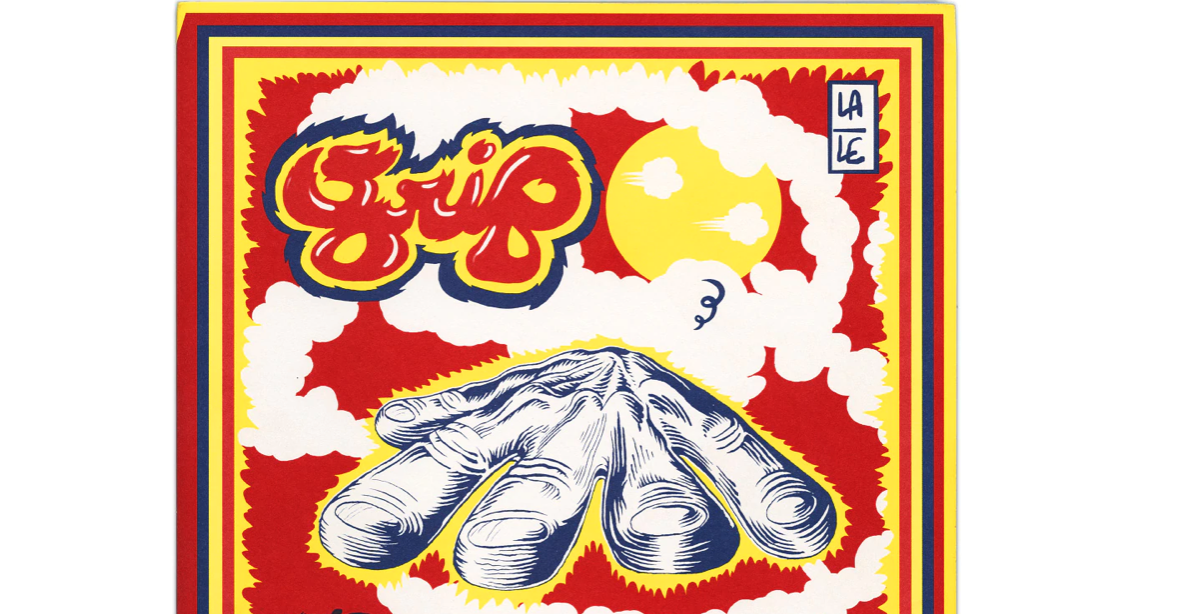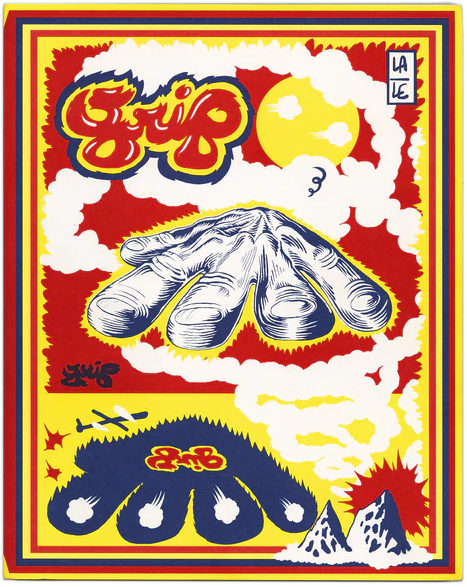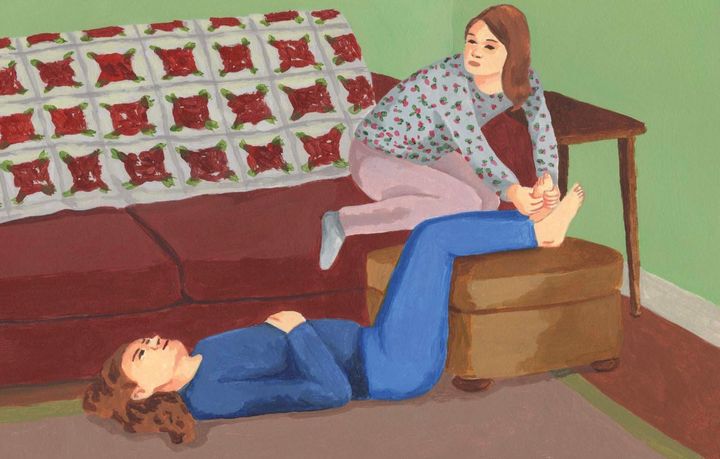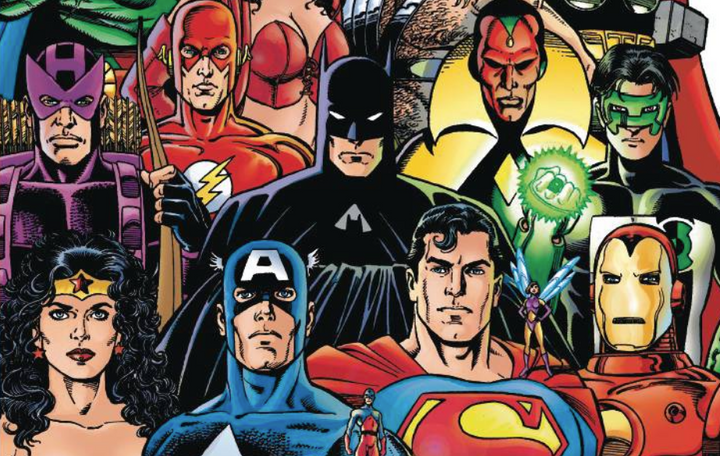Getting Caught Up In the Hands of Lale Westvind's GRIP
How do you even begin to describe the ways that Lale Westvind plays with time, with movement, and with space in this comic? She molds form and space around this woman in exaggerated ways that signal this journey’s spiritual elements as much as it does its physical one.

A journey of a thousand miles begins with a single step.
Lale Westvind’s Grip is a journey that starts in the most innocuous way with a woman walking down a sidewalk. Nothing special, no grand destiny waiting to be met or any sense of destiny in that walk. Just a woman, our hero figure in this story, stumbling a break in the wall that she’s compelled/pushed to look into. Some internal or external force causes her a moment’s curiosity that changes her, turning her hands into whirling, tornado-like forces of nature. Westvind draws this moment, and many more in this comic like it, as chaotic storms to be tamed and controlled. They’re not destructive but vocational and creative; they just need to be controlled and learned about. And so begins this woman’s path to learn about her abilities to create and craft as a woman from other women who have already learned these things about themselves.
Largely wordless with a few sound effects and printed materials like posters or books in the background, Westvind has created one of the loudest comics. Her colors practically fight each other on the page. The vivid pinks set against yellow backgrounds set the volume of this comic, pushing the visual decibels to their max. It verges on being difficult to look at but Westvind never turns the knobs to 11, instead finding just the right balance of these colors that make these images so intriguing and captivating. Her bright, warm colors, occasionally toned down with cooling purples and greens, welcome and guide us into this woman’s new experiences. For everything else that visually happens in this book, these unique colors provide an anchor for the reader throughout the book. It’s not a base that we’re used to but we can quickly grow accustomed to it, swept along in their warmth.
These colors establish a unified base for Westvind’s drawings, which are some of the most rapturously energized art as she shows the process of learning how to work with your hands. She turns this learning into an experiential act that’s frenzied, that’s haphazard, that’s frustrating for the woman. Whatever she has to learn about the powers and skills that she’s gained, it’s not easy or clear. Westvind takes what the character is experiencing, which most cartoonists would use dialogue and narration to get to, and turns it into a much more visceral experience for the character and, more importantly, for the reader. If the woman is learning what she can do, we have to learn to read Westvind’s drawings as tone and energy as much as, if not more than, we do as narrative and plot.
“Expansive and Enveloping..."
And those drawings. How do you even begin to describe the ways that Westvind plays with time, with movement, and with space in this comic? She molds form and space around this woman in exaggerated ways that signal this journey’s spiritual elements as much as it does its physical one. And maybe it’s even more about the spiritual journey than any physical trip that this woman is taking to learn. Starting as just a traveler on the sidewalk, the woman’s world opens up to so much more than just that sidewalk. Whatever she encounters that changes her also changes the scope of her world, creating opportunities that she didn’t have before and shifting her worldview to be much broader than it originally was.
Westvind draws a spiritual journey to discover this character’s place in the world. She begins small and unassuming, experiences something that she thinks is unique but discovers that there are other women like her. Whatever she’s going through, she’s not alone in it; Westvind opens these experiences up to be communal and shared. It’s a truly lovely image that she builds of support, exploration, and community that this woman now finds herself part of. The cartoonist gets caught up in this story, pulled into the wake of its forward force. Each page and each image is something to get lost in as it swirls up around you but it’s also something to let carry you into the exploration of its themes. The printed page is relatively small and self-contained but the spirit of the artwork is expansive and enveloping.
For as “loud” as the comic is, it’s also tremendously physical. With all of the quick hand movements, it should seem off-putting, possibly even confrontational. But Westvind finds honor in the work of these hands; she finds dignity in them. They are a part of this woman that she’s growing into in this comic. They take her on this magical trip of discovery but they’re also shaping the world. One of the main takeaways in this book is just how active the woman is. She’s in constant motion in a way that is carrying her through the world, into each new encounter and opportunity. Everything she does and everyone she meets helps lead her to the next thing. The next thing is almost always an opportunity to learn new ways to mold the story around her and to mold her own story in them. Each page is empowering her more and more, expounding on the agency that she already has but giving her more knowledge to back up that agency. She’s a worker and a crafter, learning constantly by actually doing.
Grip is constantly moving forward and never looks back. It’s a journey that starts with a walk down a sidewalk and leads this woman into a quest of discovery. Lale Westvind’s pages are brimming full of this woman’s constant activity. The physical page almost isn’t big enough to contain everything that’s happening in Westvind’s drawings and that’s part of the magic of this book. It’s a story that’s bigger than just what can be shown on a page. And words aren’t sufficient enough for this story so Westvind relies solely on her images to convey the magic and dignity of this journey. And the images never fail to capture the power of Westvind’s story.






Comments ()